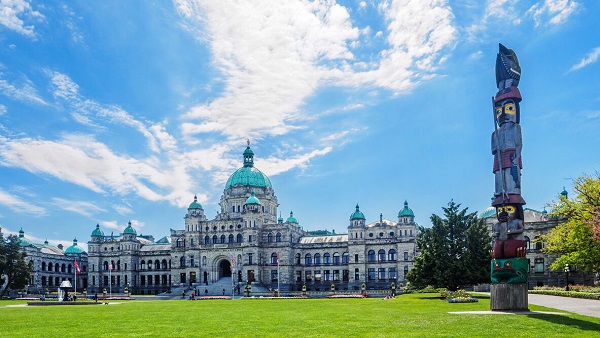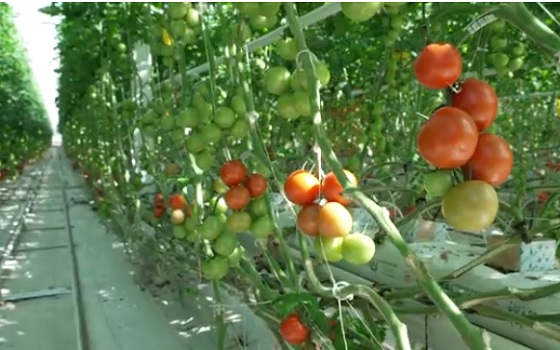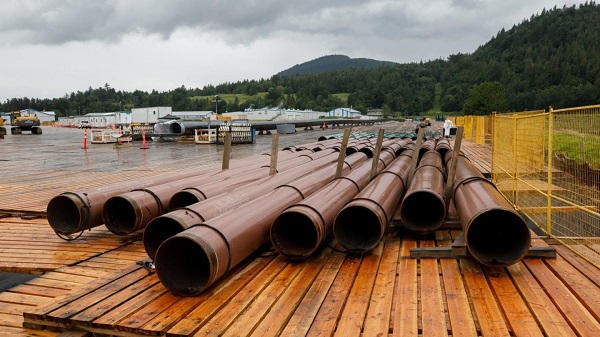Opinion
The Real “Conservative Movement”

-
Organization: How can we better support each other?
-
Platform: What are our core principles?
-
Parental Authority
-
Democratic Rights
-
Compassion for the Vulnerable
-
Fiscal Responsibility
-
Accountability
Business
UNDRIP now guides all B.C. laws. BC Courts set off an avalanche of investment risk

From Resource Works
Gitxaala has changed all the ground rules in British Columbia reshaping the risks around mills, mines and the North Coast transmission push.
The British Columbia Court of Appeal’s decision in Gitxaala v. British Columbia (Chief Gold Commissioner) is poised to reshape how the province approves and defends major resource projects, from mills and mines to new transmission lines.
In a split ruling on 5 December, the court held that British Columbia’s Declaration on the Rights of Indigenous Peoples Act makes consistency with the United Nations Declaration on the Rights of Indigenous Peoples a question courts can answer. The majority went further, saying UNDRIP now operates as a general interpretive aid across provincial law and declaring the Mineral Tenure Act’s automatic online staking regime inconsistent with article 32(2).
University of Saskatchewan law professor Dwight Newman, who has closely followed the case, says the majority has stretched what legislators thought they were doing when they passed the statute. He argues that section 2 of British Columbia’s UNDRIP law, drafted as a purpose clause, has been turned from guidance for reading that Act into a tool for reading all provincial laws, shifting decisions that were meant for cabinet and the legislature toward the courts.
The decision lands in a province already coping with legal volatility on land rights. In August, the Cowichan Tribes title ruling raised questions about the security of fee simple ownership in parts of Richmond, with critics warning that what used to be “indefeasible” private title may now be subject to senior Aboriginal claims. Newman has called the resulting mix of political pressure, investor hesitation and homeowner anxiety a “bubbling crisis” that governments have been slow to confront.
Gitxaala’s implications reach well beyond mining. Forestry communities are absorbing another wave of closures, including the looming shutdown of West Fraser’s 100 Mile House mill amid tight fibre and softwood duties. Industry leaders have urged Ottawa to treat lumber with the same urgency as steel and energy, warning that high duties are squeezing companies and towns, while new Forests Minister Ravi Parmar promises to restore prosperity in mill communities and honour British Columbia’s commitments on UNDRIP and biodiversity, as environmental groups press the government over pellet exports and protection of old growth.
At the same time, Premier David Eby is staking his “Look West” agenda on unlocking about two hundred billion dollars in new investment by 2035, including a shift of trade toward Asia. A centrepiece is the North Coast Transmission Line, a grid expansion from Prince George to Bob Quinn Lake that the government wants to fast track to power new mines, ports, liquefied natural gas facilities and data centres. Even as Eby dismisses a proposed Alberta to tidewater oil pipeline advanced under a new Alberta memorandum as a distraction, Gitxaala means major energy corridors will also be judged against UNDRIP in court.
Supporters of the ruling say that clarity is overdue. Indigenous nations and human rights advocates who backed the appeal have long argued that governments sold UNDRIP legislation as more than symbolism, and that giving it judicial teeth will front load consultation, encourage genuine consent based agreements and reduce the risk of late stage legal battles that can derail projects after years of planning.
Critics are more cautious. They worry that open ended declarations about inconsistency with UNDRIP will invite strategic litigation, create uncertainty around existing approvals and tempt courts into policy making by another name, potentially prompting legislatures to revisit UNDRIP statutes altogether. For now, the judgment leaves British Columbia with fewer excuses: the province has built its growth plans around big, nation building projects and reconciliation framed as partnership with Indigenous nations, and Gitxaala confirms that those partnerships now have a hard legal edge that will shape the next decade of policy and investment.
Resource Works News
Energy
Tanker ban politics leading to a reckoning for B.C.

From Resource Works
That a new oil pipeline from Alberta to BC is being aired by Ottawa and pushed by Alberta has, in turn, critics eagerly pushing carefully crafted scare stories.
Take the Green Party’s Elizabeth May, for one: She insists that oil tankers leaving Prince Rupert would be sailing through “Canada’s most dangerous waters and the fourth most dangerous waters in the world.”
First, this “dangerous waters” claim is unsubstantiated, unproven, and hyperbolic. It is apparently based on a line in a 1992 federal guide to marine-weather hazards on the west coast, but it is not credited or supported there.
Second, who says a new oil pipeline would go to Prince Rupert? No destination is specified in the memorandum of understanding published by Ottawa and Alberta.
It speaks of a commitment to “enable the export of bitumen from a strategic deep-water port to Asian markets.”
Energy Minister Tim Hodgson: “There is no route today. Under the MoU, what (Alberta) would need to do is work with the affected jurisdiction, British Columbia, and work with affected First Nations for that project to move forward. That’s what the work plan in the MoU calls for.”
First Nations concerned
Now, the MoU does say that this could include “if necessary” a change to the federal ban on oil tankers in northwest BC waters.
Some First Nations are strongly fighting the idea of oil tankers in northern BC waters citing fears of a catastrophic spill. The Assembly of First Nations (AFN), for example, is calling for the Canada-Alberta pipeline MoU to be scrapped.
“A pipeline to B.C.’s coast is nothing but a pipe dream,” said Chief Donald Edgars of Old Massett Village Council in Haida Gwaii.
And AFN National Chief Cindy Woodhouse Nepinak said: “Canada can create all the MOUs, project offices, advisory groups that they want: the chiefs are united. . . When it comes to approving large national projects on First Nations lands, there will not be getting around rights holders.”
Alberta group interested
But the Metis Settlements of Alberta say they’re interested in purchasing a stake in the proposed pipeline and want to “work with First Nations in British Columbia who oppose the project.”
The Alberta government’s Indigenous loan agency says a new oil pipeline to the BC coast could deliver “significant” returns for Indigenous Peoples.
Alberta Premier Danielle Smith has suggested the pipeline could bring in $2 billion a year in revenue, and that it could be as much as 50 per cent owned by Indigenous groups — who would thus earn $1 billion a year,
“Can you imagine the impact that would have on those communities in British Columbia and in Alberta? It’s extraordinary.”
And we note that in 2019 the First Nations-proposed Eagle Spirit Energy Corridor, which aimed to connect Alberta’s oilpatch to Kitimat, garnered serious interest among Indigenous groups. It had buy-in from 35 First Nations groups along the proposed corridor, with equity-sharing agreements floated with 400 others. (The project died with passage of the tanker ban.)
Vancouver more likely
More recent chatter, including remarks by BC Premier David Eby, would suggest oil from a new pipeline would more likely be through Vancouver, rather than via Prince Rupert or Kitimat BC. And tankers have been carrying oil from the Trans Mountain Pipeline System’s Burnaby terminal since 1956 — with no spills.
Oft cited by northern-port opponents is the major spill of 258,000 barrels of crude oil (more than 40 million litres) from the tanker Exxon Valdez, which ran aground in Alaska’s Prince William Sound in 1989.
The resulting spill killed native and marine wildlife over 2,100 km of coastline. The U.S. National Transportation Safety Board found that the spill occurred due to human error. It cited a tired third mate on watch, and noted the captain had an alcohol problem.
But the Exxon Valdez was a single-hull tanker. Its spill led to the phasing out of single-hull tankers, replaced in the ensuing 36 years by new generations of double-hull vessels (with an inner and outer hull separated to contain spills if the outer hull ruptures), new tanker safety rules — and new ways of dealing with the far-fewer spills.
Among those new ways is the Western Canada Marine Response Corporation: “Our mandate is to ensure there is a state of preparedness in place when a marine spill occurs and to mitigate the impacts on B.C.’s coast. This includes the protection of wildlife, economic and environmental sensitivities, and the safety of both responders and the public.”
What about LNG carriers?
At the same time, fear-mongers are actively flogging scare stories on social media.
One opposition group sees future LNG carrier traffic along the southern BC coast as potentially numbering “in the realm of 800+ transits a year.”
Eight hundred a year? BC Ferries runs more than 185,000 a year. And the ferries don’t have tethered tugs helping them to get safely from LNG terminals. And they don’t have BC Coast Pilots on the bridge to keep progress safe. Oil tankers leaving the Port of Vancouver have both.
As marine captain Duncan MacFarlane of LNG Canada in Kitimat says: “LNG carriers are some of the most sophisticated ships in the world…Once loading operations are complete (at LNG Canada), three BC Pilots will join the ship and start navigating up the Douglas Channel, which is approximately 159 nautical miles out to the Prince Rupert pilot station.”
“LNG Canada has partnered with HaiSea Marine, which is a company formed between the Haisla Nation and Vancouver-based SeaSpan, to provide two escort tugs and three harbour-assist tugs to safely move the vessel out of the Douglas Channel…once the vessel drops the pilots at Prince Rupert, it starts a seven- to ten-day voyage to its discharge port. To assist with this, they’ll use satellite navigation, weather routing, and a variety of other technologies to get to their port the safest and most efficient way.”
The same would apply to oil tankers from any northern port in BC.
BC’s tanker-safety record
As the small-c conservative Fraser Institute points out: “Pipelines are 2.5 times safer than rail for oil transportation, and oil tankers have [the] safest record of all.”
And it adds: “The history of oil transport off of Canada’s coasts is one of incredible safety, whether of Canadian or foreign origin, long predating federal Bill C-48’s tanker ban. . . .new pipelines and additional transport of oil from (and along) B.C. coastal waters is likely very low environmental risk. In the meantime, a regular stream of oil tankers and large fuel-capacity ships have been cruising up and down the B.C. coast between Alaska and U.S. west coast ports for decades with great safety records.”
This last refers to the 200-230 tankers a year that now carry crude oil from Alaska through Canadian waters south of Haida Gwaii and then down BC’s Inside Passage or outer coastal waters to Juan de Fuca Strait and Washington refineries.
While these tankers do not transit Hecate Strait (the north end of which is the area of concern about spills from tankers from Prince Rupert or Kitimat) all these US tankers are double-hulled, must report positions, speeds and routes in real-time, must carry certified pilots, must use traffic-separation routes (like traffic lanes), and must slow to 11 knots in sensitive areas.
And as Pipeline Action says: “Canada is not inferior — If Norway can move tankers safely through fjords, if Japan can operate in some of the busiest waterways on Earth, if Alaska balances ecological protection with responsible shipping and if Eastern Canadian ports manage tankers every day, then Canada’s West Coast, with its governance standards, technical capacity and Indigenous partnership potential, can certainly do so.”
Resource Works News
-

 Automotive2 days ago
Automotive2 days agoThe $50 Billion Question: EVs Never Delivered What Ottawa Promised
-

 Local Business2 days ago
Local Business2 days agoRed Deer Downtown Business Association to Wind Down Operations
-

 International2 days ago
International2 days agoTrump admin wants to help Canadian woman rethink euthanasia, Glenn Beck says
-

 C2C Journal2 days ago
C2C Journal2 days agoWisdom of Our Elders: The Contempt for Memory in Canadian Indigenous Policy
-

 Alberta2 days ago
Alberta2 days agoAlberta introducing three “all-season resort areas” to provide more summer activities in Alberta’s mountain parks
-

 Agriculture2 days ago
Agriculture2 days agoGrowing Alberta’s fresh food future
-

 Alberta2 days ago
Alberta2 days agoThe case for expanding Canada’s energy exports
-

 Censorship Industrial Complex2 days ago
Censorship Industrial Complex2 days agoConservative MP calls on religious leaders to oppose Liberal plan to criminalize quoting Scripture






